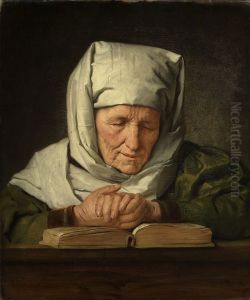Karl Brunner Paintings
Karl Brunner was a Swiss artist known for his contributions to early 20th-century European art, particularly within Switzerland. Born on April 16, 1887, in Winterthur, Switzerland, he was part of a generation of artists that grappled with the rapid changes of modernity and the aftermath of World War I. Brunner's early life was marked by a traditional education in the arts, which was typical for artists of his time. He studied at various art schools in Switzerland and possibly in other parts of Europe, as was common for Swiss artists to travel for their education.
His work is less well-known internationally than that of his contemporaries, but within Switzerland, he contributed significantly to the cultural landscape. His artistic style may have been influenced by the dominant movements of his time, such as Impressionism, Expressionism, or the early avant-garde. However, specific details about his style and the themes he favored are not well documented in international art historical discourse.
Brunner's career would have spanned several decades, during which Europe experienced significant turmoil and transformation. It is likely that the events of World War I and II, as well as the interwar period, influenced his work, as they did for many artists of that era. After a career that witnessed the evolution of modern art and the impact of global conflicts on the European consciousness, Karl Brunner passed away on October 24, 1965.
It is important to note that there may be multiple individuals with the name Karl Brunner, including those outside the field of art. For instance, there is Karl Brunner the Swiss economist, who lived from 1916 to 1989, and is well-known for his work in monetary theory. Therefore, when researching Karl Brunner the artist, one must take care to distinguish between these different figures to avoid confusion.
